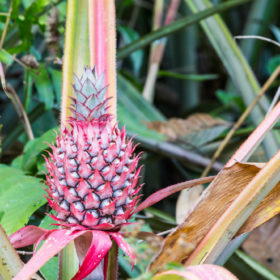
Fructose – The Bad Kid
We have covered glucose, the body’s preferred fuel (and the brain’s only fuel). If this were school and we were grading papers, glucose would get an A+.
Then there’s fructose, that obnoxious kid who sits in the back of the class and makes faces at the teacher. And pulls all the girls’ hair. And always gets everyone else in trouble. Because of that, fructose gets an F- on all his papers.
Now wait a minute, let’s back up. There are times when even fructose gets it right. When it’s found naturally in nutritious fruits and other starchy foods, especially in foods with a lot of fiber, fructose is actually not such a bad guy.
The problem is when fructose hangs with a bad crowd. Or by itself. When fructose is chemically plucked out of healthful foods and plunked into not-so-healthful foods as a “healthy sweetener,” it’s anything but.
Ingested in this way, fructose can cause a lot of disruption. Again, if this were school, fructose would be the one making it hard for the other kids to focus. In health terms, this lack of focus means an increased risk for insulin resistance and eventual diabetes, cardiovascular disease, cancer, arthritis, liver disease, and other problems you really don’t want to have.
Artificially manipulated fructose, consumed routinely for as little as 10 weeks, can also cause fat cells to accumulate around the heart, liver, and digestive organs. Say hello to fructose in this unnatural state and say goodbye to rock-hard abs. Then say hello to flab. And disease.
The metabolic burden of digesting fructose falls solely on the liver: 100% of the breakdown of this concentrated, isolated sugar is managed there. For a while, the liver can keep up. But much like excessive alcohol, too much fructose overwhelms the liver, which causes the body to become overwhelmed by toxic metabolic byproducts implicated in many of the diseases above.
What’s the root of fructose’s bad behavior? Well, sad to say, it comes from a bad home: GMO corn.
Remember that fructose occurs naturally in fruits and starchy foods. In that context, it’s reasonably well behaved. But somewhere along the line, food producers started thinking: corn is one of the starchiest foods there is, so why not suck out the sweet sugar from corn and sell it as a healthy sweetener? Even better, why not process it beyond all recognition and create cheap and plentiful (and dangerous) high fructose corn syrup (HCFS)?
HFCS, which is arguably not even food as we normally think of it, lurks in almost anything boxed, processed, baked, or sweetened – basically everything in the center aisles of the grocery store. HFCS is inexpensive and easy to produce, which is why it’s everywhere. It makes everything it touches taste sweet. But our bodies know the difference. Fructose in an apple vs. genetically modified fructose syrup in a store-bought brownie are two different things.
Avoid HFCS. For a source of dried sugar that is pretty close to the real thing found in food, choose date sugar or maple sugar. Or my favorite, Sucanat, which is just dehydrated cane juice. Don’t be tricked by fancy packaging or the slick brown color added to sugars to make them look a bit more healthful. Instead, be informed, read labels, and stick as close to Nature as you can. Your body will thank you for it later.



